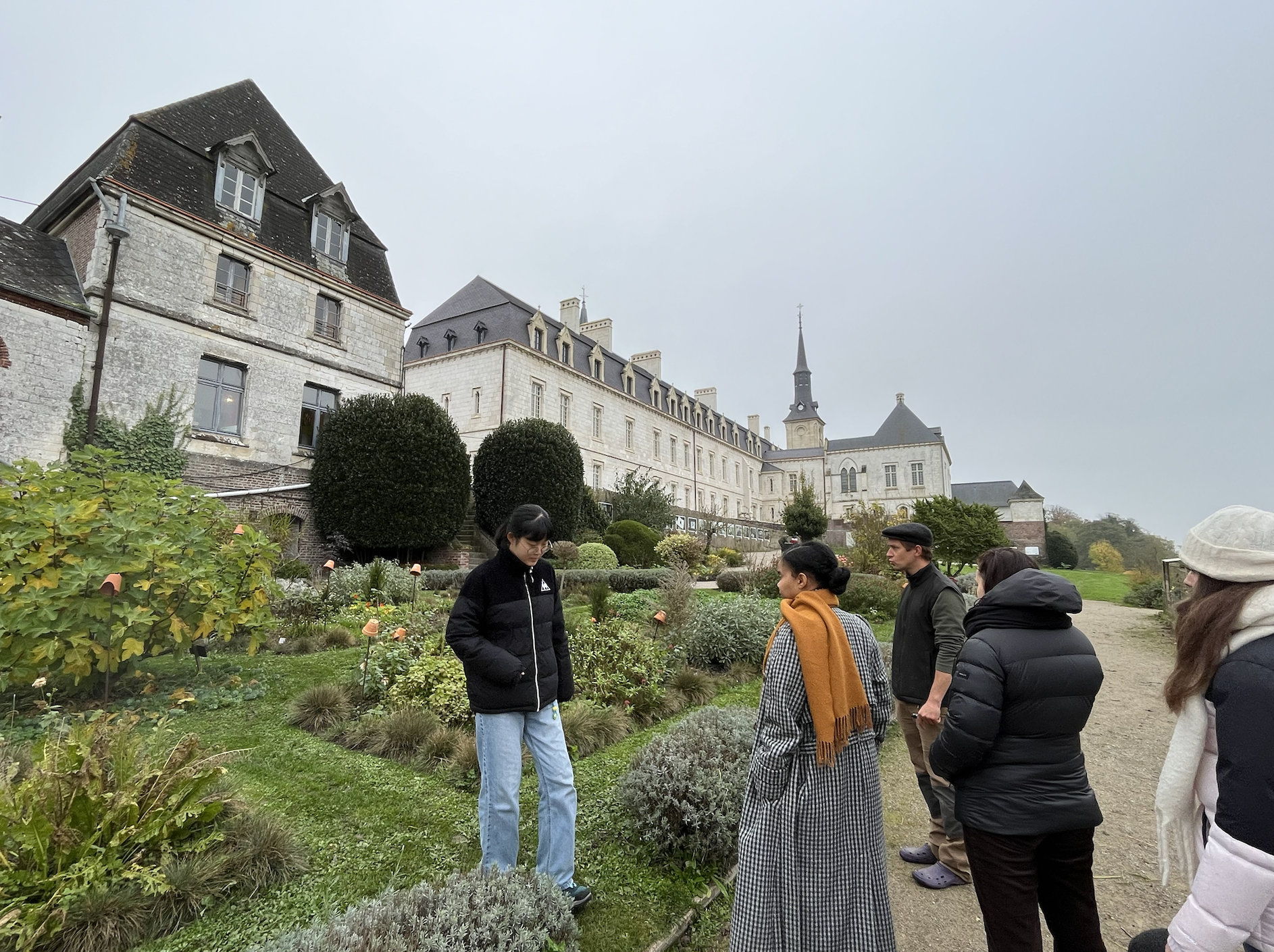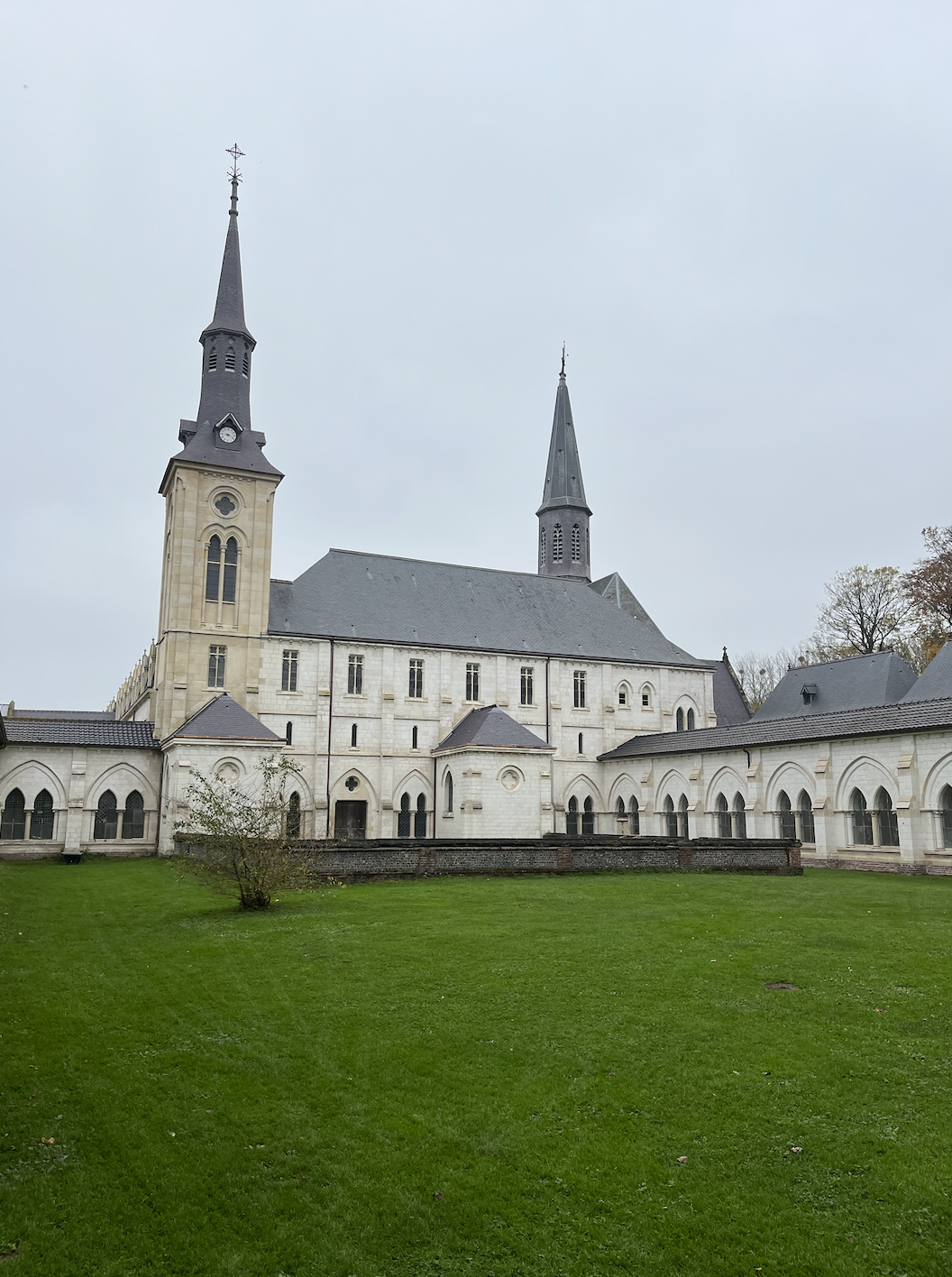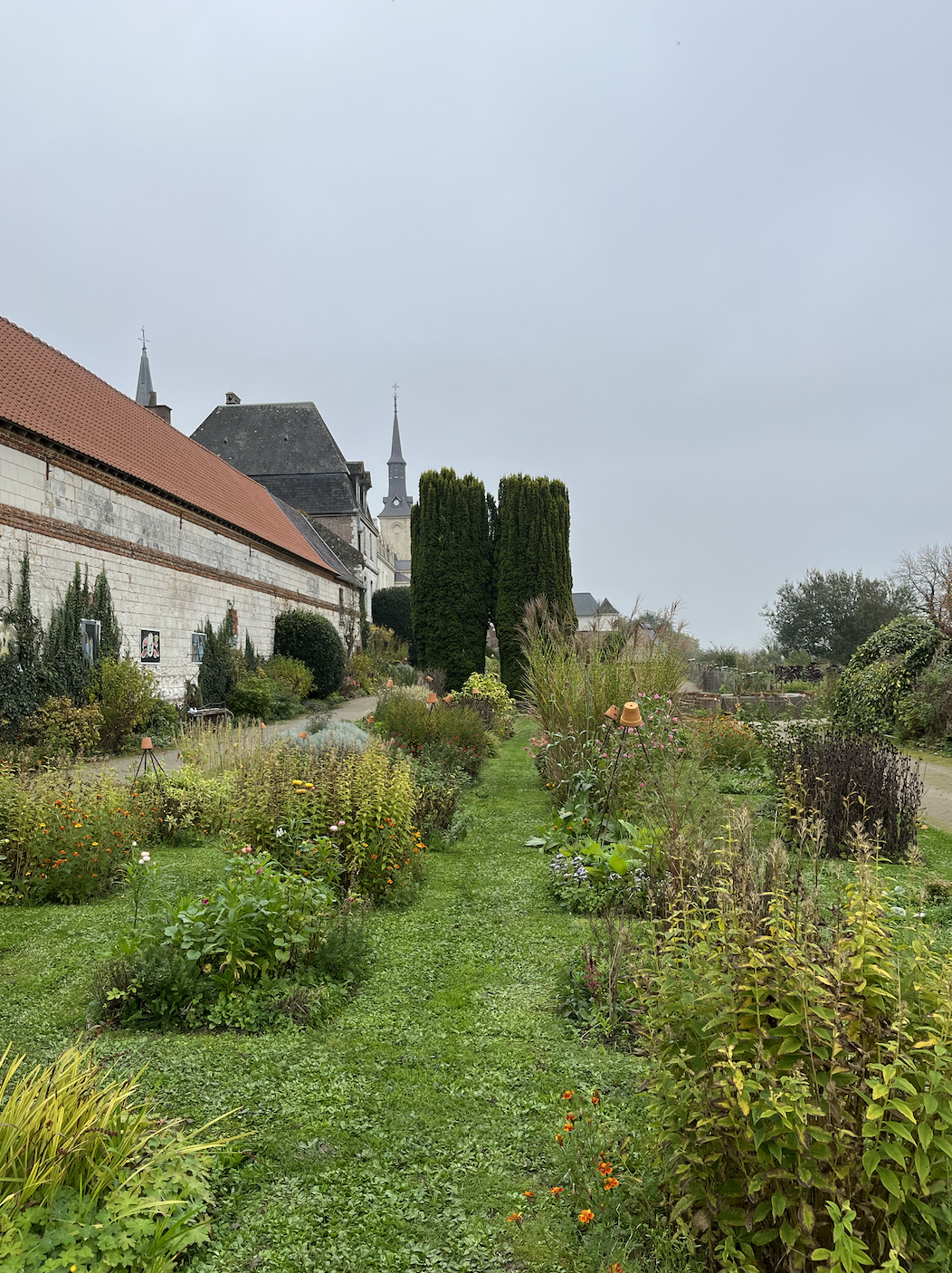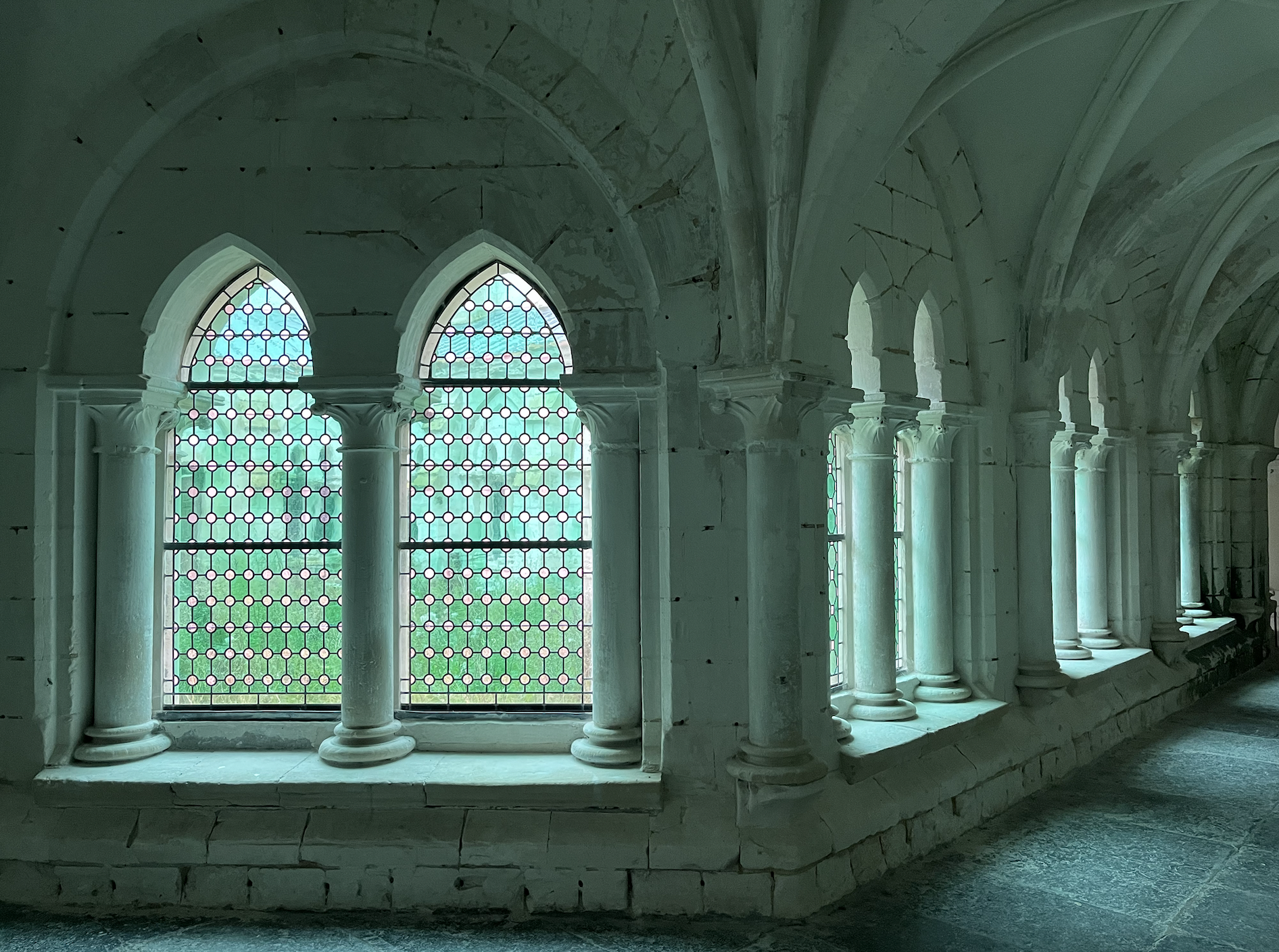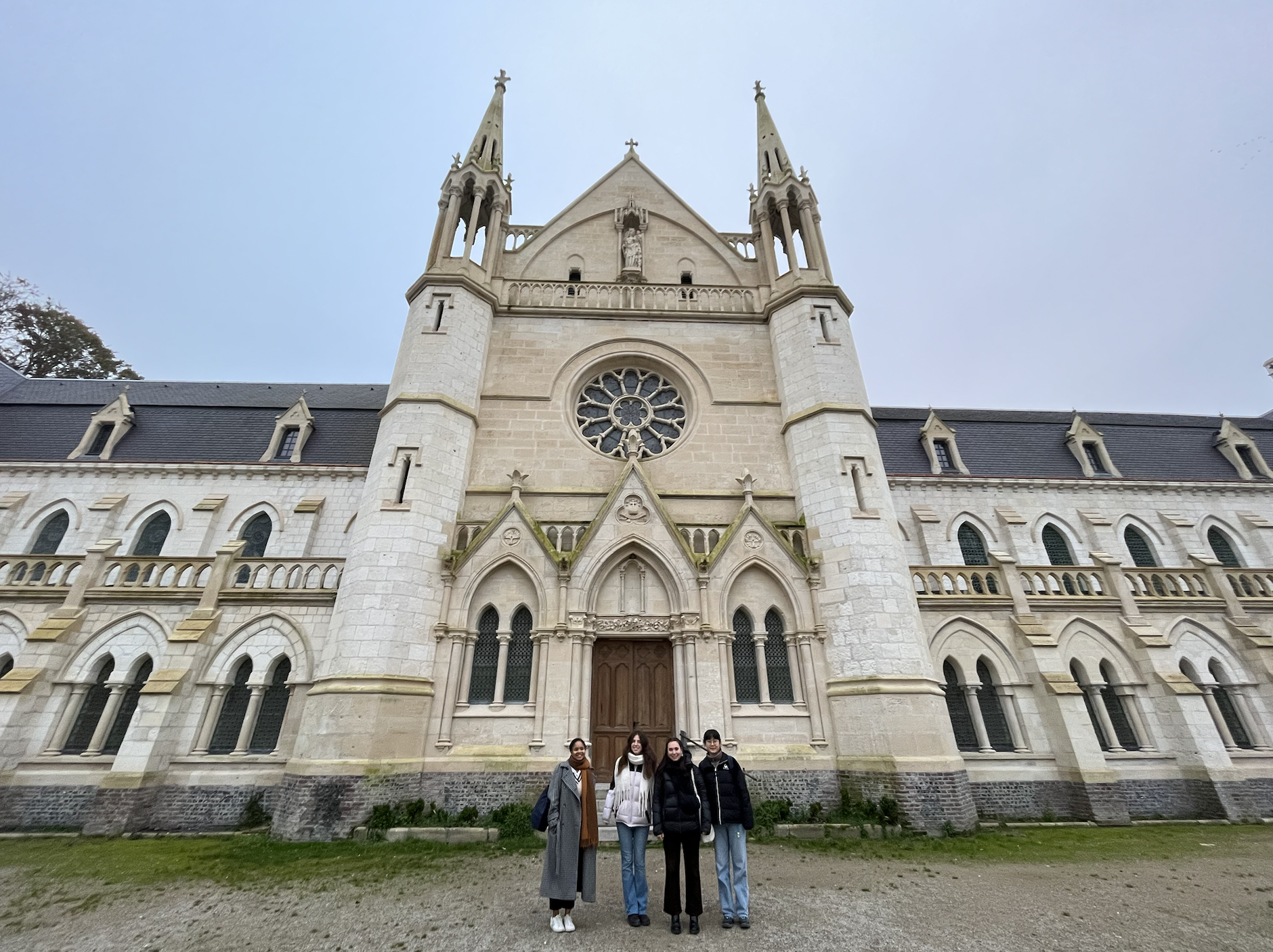As part of its network monitoring activities, the ACCR approached students on the Master's 2 program in Tourism Management and Heritage Development at the Institute for Research and Higher Studies in Tourism (IREST) to conduct an exploratory study on the integration of cultural meeting centers into the tourism dynamics of their region and their identification by stakeholders in the sector. For this initial experiment, Les Dominicains de Haute-Alsace and La Chartreuse de Neuville were the two case studies.
For this study, the students' assessment was divided into several stages: consultation of resources provided by the centers and the ACCR, independent research to understand and map out the field and the actors involved, drawing up a list of people to meet and interview grids before conducting the interviews and analyzing the transcripts, a week-long field trip for immersion, comparisons with existing and similar models to draw inspiration and better understand the site through a mirror effect, suggestions for improvements or avenues to explore, etc. For each CCR, the students carried out personalized work responding to issues identified in consultation with the teams on site.
Beyond the CCR's observatory role, this project also reflects a commitment that is dear to the ACCR, namely to support future cultural professionals in their training.
Focus on the Chartreuse de Neuville /
Below are excerpts from the report “Exploratory study on the tourism development potential of the Chartreuse de Neuville and its integration into local dynamics” by Ziying Chen, Stéphenka Lina, Costanza Ricci, and Arianna Suzzi.
This exploratory study highlighted the challenges associated with integrating the Chartreuse into local tourism dynamics, as well as the perceptions of the stakeholders involved. To do this, they looked at the region's tourism positioning, the main visitor flows, the area's strengths and weaknesses, and visitor expectations.
/ The identity of the site
The example of the Chartreuse has illustrated one of the specific features of the CCR network, namely places where different types of heritage coexist and where the successive layers of history that make up the place are promoted in a dynamic and flexible way.
"Over the centuries, this place has developed a rich and multifaceted identity, marked by overlapping and complementary facets: a religious and spiritual identity rooted in its monastic foundation, an artistic and cultural vocation born of its openness to artists and a desire to democratize art, a humanitarian and social dimension that has been evident since the First World War with the welcoming of Belgian refugees, and a medical and social role as an asylum and hospice. More recently, its modern heritage and entrepreneurial identity has also been affirmed, demonstrating its continuous adaptation to the needs of each era.
Despite the diversity of these identities, a common thread links them all: the embodiment of a place of refuge and community. Whether as a spiritual retreat for monks, a welcome center for artists and workers, a place of support for war refugees, or a source of assistance for vulnerable people, this place is above all a space of protection, solidarity, and sharing. This vocation of welcome and support, embedded in every transformation, constitutes the very essence of its identity, a legacy of refuge that endures beyond time and use.
With regard to the heritage sites supported by the CCRs, the students focused on the gardens of La Chartreuse: "Reflecting an authentic and sustainable approach to the culture of living things, they stand out from the many DIY gardens in the region, which are often geared towards more standardized practices. Their educational function is a major aspect of this, allowing visitors to discover environmentally friendly gardening techniques and reconnect with nature. This educational character, combined with the wild and cultivated beauty of the space, gives the Chartreuse gardens a unique place in the region."
"The Chartreuse gardens aim to promote healthy and sustainable eating by raising visitors' awareness of responsible agricultural practices. Through educational workshops, participants discover ecological gardening techniques, the benefits of sustainable eating, and practical solutions for adopting a more environmentally friendly lifestyle. The gardens are also open to young people in difficulty, adults in social reintegration, and vulnerable people, thus reinforcing their role as a place of social inclusion and sharing.
They represent a space for knowledge transfer, socialization, and reconnection with nature, promoting encounters between different audiences—volunteers, workers, young people, retirees, isolated individuals—and creating a network of solidarity around shared values. The institution itself describes this space as an inclusive place where natural and human biodiversity intersect.
"The Vavilov Garden is a flagship project inspired by the work of Russian scientist Nikolai Vavilov. This conservation garden, in partnership with the Centre de Ressource de Botanique Appliquée de Lyon (Lyon Applied Botany Resource Center) and the Centre Régional de Ressources Génétiques (Regional Genetic Resource Center), is committed to preserving ancient plant varieties and strengthening seed stocks adapted to climate change. Seeds from the Vavilov Institute in Saint Petersburg are multiplied on site and reintroduced into seed banks, contributing to a seed database in France. This work contributes to the resilience of agriculture in the face of biodiversity loss and climate challenges."
The students' assessment is as much a decision-making tool as it is a means of promoting the site, highlighting its strengths, specific features, and the commitment of its teams.
“La Chartreuse embodies an ideal of solidarity and sharing. More than just a place, it embodies the idea of a refuge, inviting each of us to immerse ourselves in a community, a living memory, and preserved nature.” "
/ CCR & multi-activity
This project also helped raise awareness of the network of Centres culturels de rencontre, which is still relatively unknown, and made it easier for future professionals to understand.
The students were able to discover the philosophy behind the CCRs and share it with the people they met during the interviews and with the teams, allowing them to take a step back and remember who they are, what values drive the place, and what could change in a context that is tense both humanly and economically speaking.
"As a Centre culturel de rencontre, the Chartreuse de Neuville has an ambitious and multidisciplinary project centered around four areas of activity, each making a unique contribution to the development of this historic site:
- The creation and heritage focus is dedicated to promoting the history and cultural heritage of the Chartreuse
- The integration and training focus addresses social inclusion issues by offering programs dedicated to people in precarious situations or seeking reintegration.
- The social innovation ecosystem division positions the Chartreuse as a testing ground for projects with a social impact. The cultural institution welcomes and connects various public, private, and non-profit actors to co-create and test social entrepreneurship models.
- The economic and functional management hub focuses on the sustainable management of the Chartreuse, both financially and in terms of heritage. This hub supervises restoration work and ensures the site's long-term future by developing a solid economic model that allows the Chartreuse to remain true to its mission while ensuring its long-term viability. “
”Even without a formal survey on the perception of the label, it is possible to consider that the Chartreuse, in this context, is perceived as a place of community and welcome. Through its high-quality cultural projects, it strives to become a space where heritage and artistic innovation meet. The CCR label thus reinforces this identity by supporting a vision where culture, history, and social dynamism come together to offer a unique experience to visitors. In addition, the label also offers greater visibility to the site, positioning it as a reference point in the field of living heritage and cultural innovation.
For Nord-Pas-de-Calais Tourisme, the Chartreuse is above all a “human enterprise,” a thriving associative and collective adventure. For the Montreuil-sur-Mer Tourist Office, it is perceived as an isolated island in the plain, visible from afar but difficult to grasp in its entirety. As for the Berck Tourist Office, it evokes a place of openness, culture, and exchange, offering various opportunities such as theater and gardening.
These testimonials show that everyone remembers specific aspects of the Chartreuse, but that this plurality of perceptions lacks homogeneity. The Chartreuse is seen through different perspectives, which makes its overall identity difficult to pin down. In this context, the challenge is not to reduce the plurality of narratives linked to the institution, but to reveal the deep harmony that connects these diversities. "
These interviews repeatedly highlighted the difficulty for the CCRs to make themselves understood and to be grasped and understood as a whole, requiring careful communication on the part of the teams.
Through the figures provided and/or the testimonies collected, the students were able to back up what the teams had expressed as feelings or impressions. This shed light on specific issues raised by the CCR. For example, the issue of communication and perception of the site was raised by the CCR, particularly following the recent launch of its new website.
Through this active observation and exchange with tourism stakeholders, the students suggest that work needs to be done on the visibility of the label, echoing the general feeling of the network, the missions of the ACCR, and the statement made by Rachida Dati (French Ministry of Culture) during her visit to Sylvanès Abbey on July 29, 2025.
/ An ecosystem of stakeholders
During a week-long field trip last November, the students were able to gain an understanding of the region's tourism dynamics and meet several stakeholders in the sector, which provided an opportunity to highlight the synergies already in place and suggest improvements.
In particular, the group mapped the region's tourist sites according to different categories in order to identify potential partners for the Chartreuse and to better understand the region's identity. This will enable the CCRs to position themselves as part of a tourist circuit and destination. They also carried out a SWOT analysis.
"Although the Chartreuse is considered a strategic element of the network of stakeholders, there is a lack of systematic coordination between them. This lack of synergy limits not only opportunities for collaboration, but also the ability of each stakeholder to maximize their impact on the cultural and tourist development of the area. It would therefore be appropriate to implement a structured and collaborative approach aimed at establishing solid and regular partnerships with the various stakeholders." Following this observation, the students suggested, among other things, that the CCR should be in more frequent contact with the Le Touquet tourist office in order to receive communication materials and thus ensure that the CCR is promoted.
/ Suggestions for avenues to explore
The assignment given to the students also included a section on recommendations in order to benefit from their outside perspective and expertise in heritage management and tourism promotion.
Their suggestions included:
- Launching a Green Destination certification process. The group drafted a presentation of the label and the process for obtaining it, identified potential partners in the area, highlighted any obstacles to implementation at the CCR level, and presented a detailed example of a site that has the label, in this case the Château du Rivau, which could be an ally/source of inspiration in this process.
- The drafting of a new storytelling concept for the CCR based on the notion of a refuge, which will enable the Chartreuse project to be rolled out.
- New ways of communicating about the CCR, both on social media and on the site's website, once again providing numerous inspiring examples.
- Creating a Chartreuse community pass, for which a list of potential partners and pricing suggestions have already been drawn up by the students, along with a concrete example.

